California Zephyr
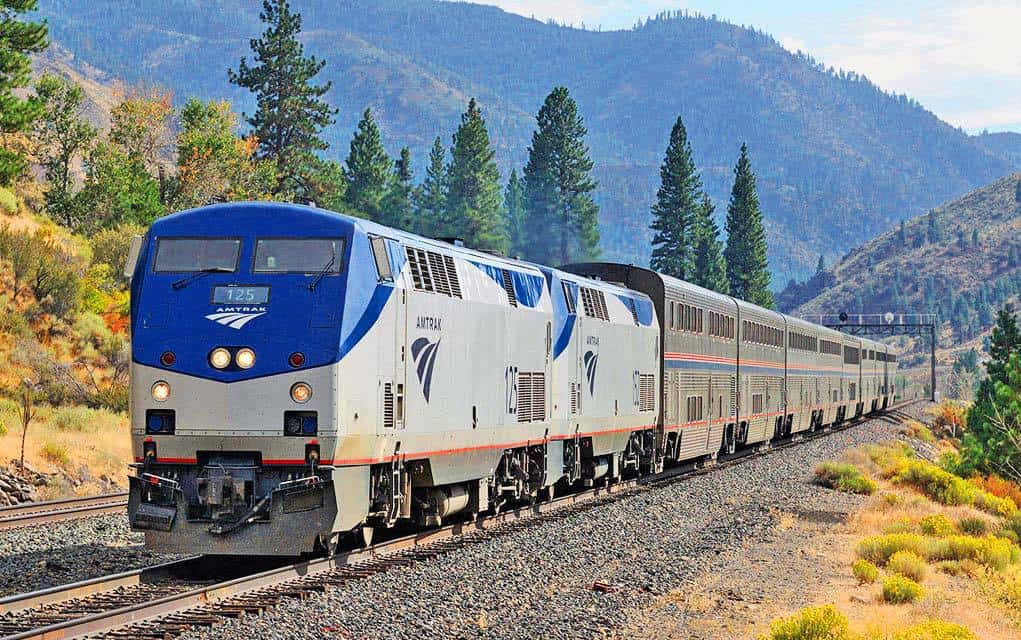
| Route 66 | Cities | Beaches |
|
California Zephyr |
 |
Sunset Limited |
Palmetto |
Crescent |
VIA |
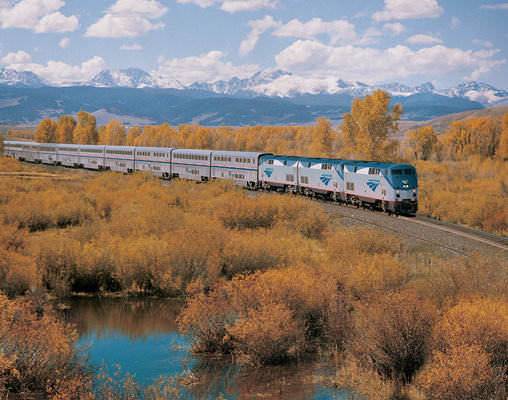 |
The California Zephyr runs between Chicago and san Francisco. It takes two days, leaving Chicago at 2 pm and arriving at San Francisco at 4:10 pm on the second day out. Coming back, it leaves Frisco at 9:10 am and arrives in Chicago at 3 pm two days later. It has all the usual equipment : coach cars, sleeper cars, observation car, dining car and mail/baggage car. The dining car uses the same Amtrak menu the other Western long distance trains use. (the old days of serving regional foods on each train are gone). The Zephyr heads due West out of Chicago, crossing northern Illinois, Iowa, southern Nebraska, Colorado, Utah, Nevada and California. Along the way it stops at beautiful stations at Omaha, Denver and Salt Lake City, although two of these are after dark so you can't get a good view or photo of the outside. Sitting in the Observation Car, you can watch beautiful views of the classic Iowa and Nebraska farm country roll by. Then you'll enjoy views of the Rocky Mountains, the Great Basin, the High Sierras and the wide agricultural San Joaquin Valley of California. |
This is the Zephyr pulling out of the Amtrak yard behind Chicago Station as seen from the 18th Street bridge. That tall building in the background is the Willis Tower (still commonly referred to as the Sears Tower). It's two blocks beyond Union Station. You get a 30 minute look at the industrial sector of Chicago on the way out of town, plus several housing projects and, eventually, some blue collar neighborhoods. This is the West Side, originally settled by the wave of European immigrants. In mid 20th century, they were gradually replaced by Blacks, Pueto Ricans and Hispanics and the neighborhood's property values began to erode. But the West Side is home to the United Center, visible to the south of the tracks, where the Bulls and Blackhawks play their home games. A campus of the University of Chicago is here, as is Marshall High School, which has produced many famous athletes, artists and musicians. Its boys have won eight state basketball championships and its girls have won 10, both records. Marshall is also just visible to the south, near Garfield Park. It is a very large school, a block long and five floors tall, red brick, with numerous large gables. It towers over the other buildings around it. |
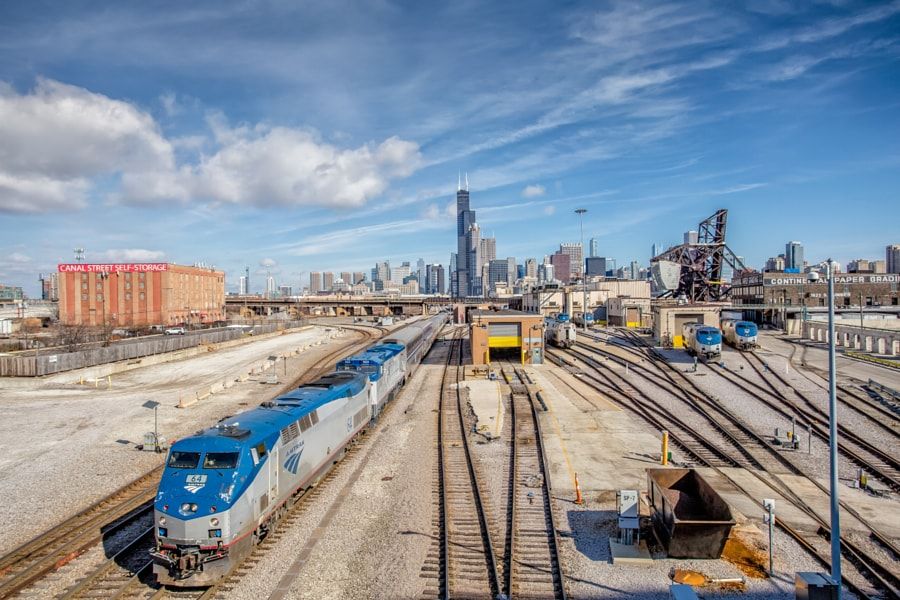 |
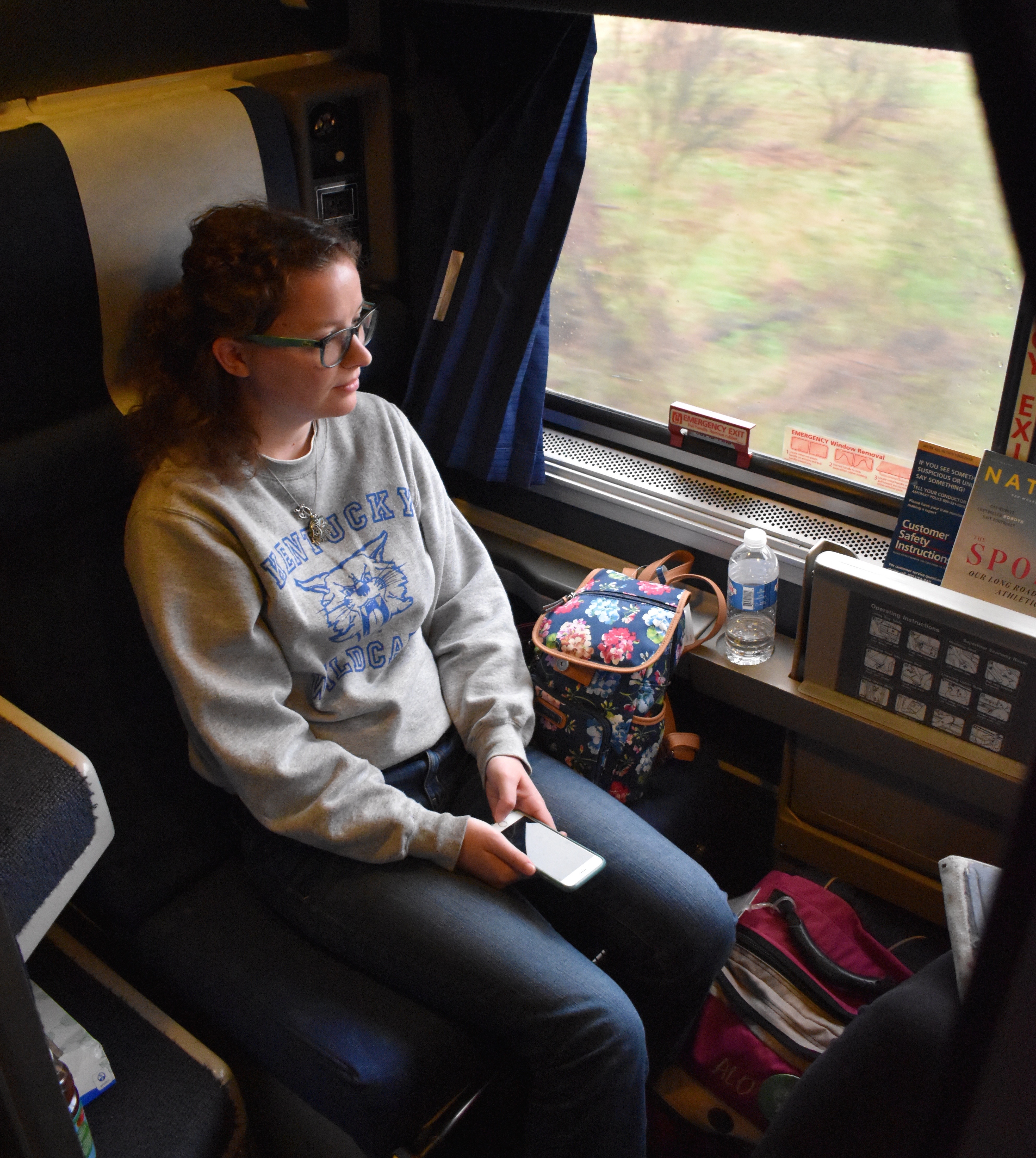 |
There will be about three hours until dinner, so you can either settle into your compartment or go to the Observation Car. Your compartment has plugs for your phone, IPad or laptop. You have the window plus overhead reading lights. You can turn on the radio or music. You could pull down the table and work, or you can sit back and watch the Illinois counryside roll by. Naperville is mostly a Chicago suburb. Almost all of its adults commute into the city daily for their jobs. As you pass through town, look for Naper Settlement, a living history museum in which costumed actors reenact the frontier days when Naperville was first founded. Also look for the River Walk, a winding park along the DuPage River. Princeton was founded in the early 1800s by Puritans from New England who felt their original values had been lost and wanted a new start. They laid out the town and established a library, school, clinic and other institutions. Princeton High School was the first public high school in Illinois. Today, Princeton's economy is based on Josten's, which manufactures rings for everything from high school graduation to professional sports teams, and Schneider Corporation, which manufactures firearm components for a dozen companies. The original Puritans planted Elm trees along every street, which created a beautiful town for over 100 years. But Dutch Elm Disease wiped them all out in the 1950s and the town is still recovering its tree cover. Galesburg is the home of famous poet Carl Sandburg and his home is open as a historical site. This has always been a railroad town and still is. Today the BNSF employs most of the men. |
The Zephyr crosses the Mississippi River at Burlington over this unique drawbridge. The bridge can be raised to let boats pass. This crossing has been uncertain recently as the Mississippi has been in flood stage for several months every Spring. As you can see, the tracks here are not that far above water level. Amtrak has been forced to route the Zephyr further north on other tracks. This is not too far north of Hannibal, Missouri, home of Mark Twain and his Tom Sawyer and Huckleberry Finn novels. Twain wrote several books about the Mississippi River and the riverboats that navigated it. He wrote of the river in flood, saying that it could become too wide to see across from one shore to the other. Even though we have built numerous dams and locks in the century and a half since Twain, the river still floods and spreads out like it did in his time. |
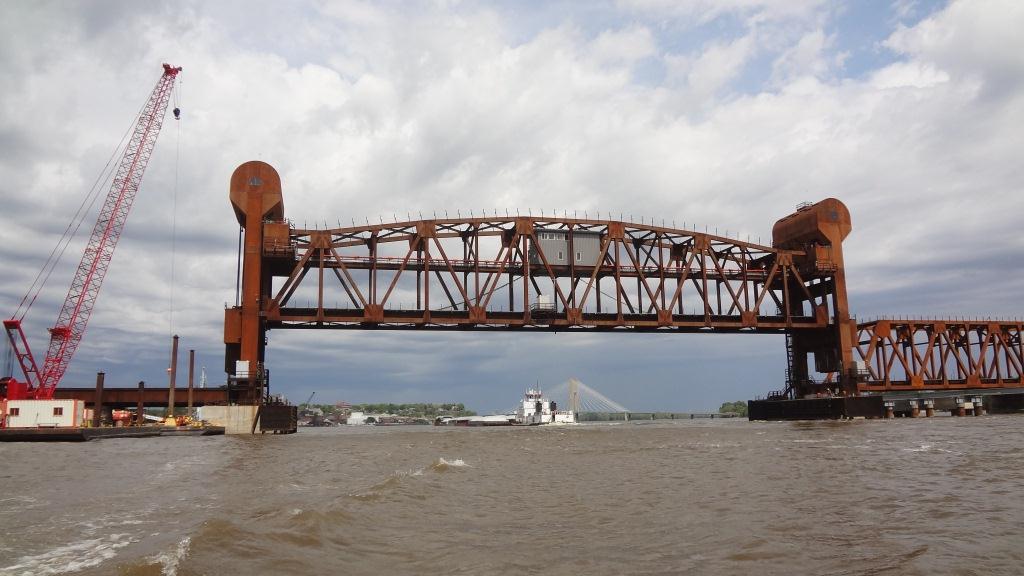 |
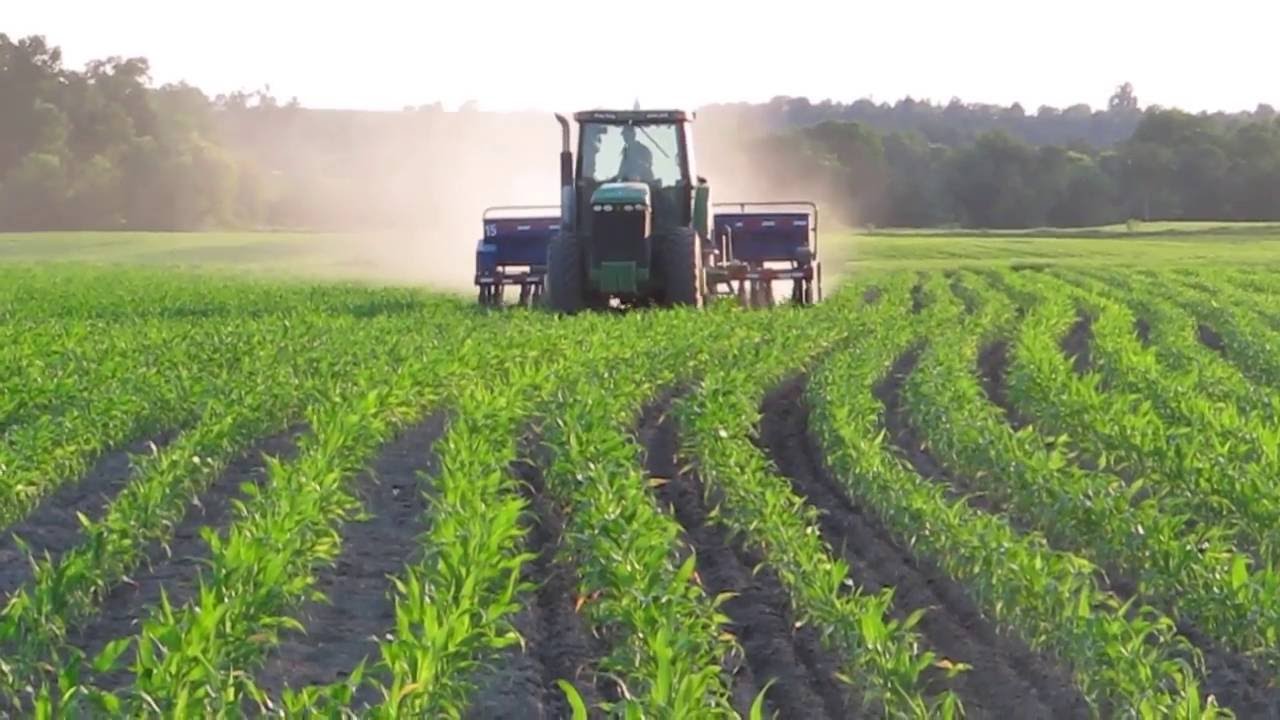 |
Once you enter Iowa, you'll watch some of America's finest farm land rolling past your window for the rest of the day. California may raise much of the Lettuce and other leafy vegetables for America, but Iowa produces its Corn, Soybeans and Oats, plus Chickens, Turkeys, Hogs and Dairy products. Last year Iowa produced $8 billion of Corn. And it's not all the sweet corn we eat as "corn on the cob." Iowa raises Field Corn, which is used as feed for various types of livestock. Much of Iowa's corn is used to make corn syrup, used in various food products. Some of it is used to make Ethanol, which now accounts for 15% of each gallon of gas pumped into our gas tanks. A hefty percentage of Iowa corn is also exported and used to help feed the world. |
The Iowa soil is officially recognized by agricultural scientists as the deepest and richest in the world. Even without fertilizer or chemicals, almost anything can be raised here. After 150 years of cultivation, some of the soil has been lost, but it is still deep and rich. Farmers here are very well educated --- the University of Iowa and Iowa State University are both leaders in agricultural research --- and were pioneers in crop rotation, no till crops, cover crops, companion planting, mulch, composting, and other strategies. One reason many Iowa farm families are so stable is that their ancestors came out here and homesteaded this land in the 1800s and have handed it down generation by generation ever since. So these farmers are not trying to pay off huge bank loans or mortgages. They still have to cope with droughts, heavy rains and other weather factors but they've got two centuries of built up knowledge to help deal with them. |
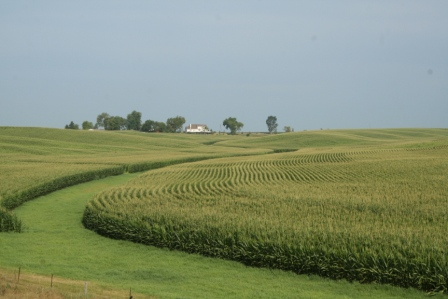 |
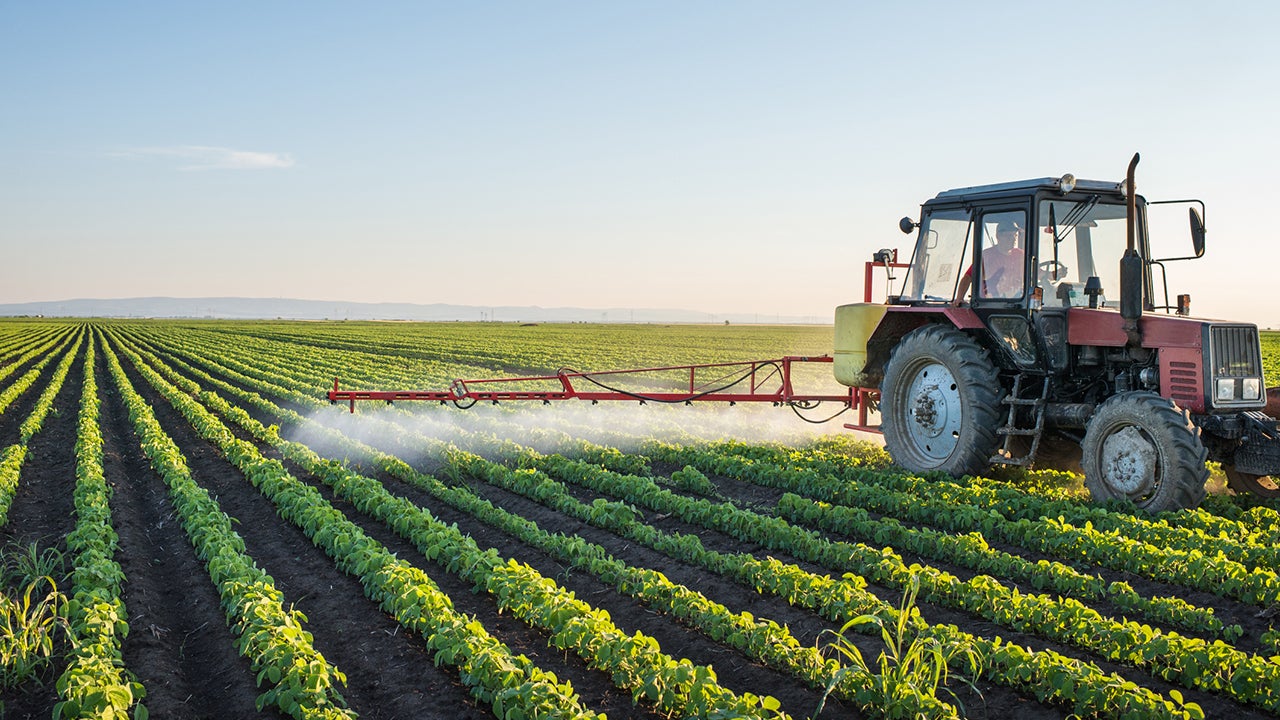 |
Even the machinery you see is carefully managed. The days of farmers owning all their own heavy equipment are gone. Today, farmers have joined together in local co-ops and bought the equipment jointly, then take turns using it. And they definitely use it. The farming you're seeing is highly mechanized. Those enclosed cabs you're seeing are air conditioned and have their own sound systems and phone contact back to the house. The cost of the gasoline has to be factored into the price of the corn or oats or whatever, which is why prices at the grocery keep going up. |
One of the fascinating aspects of Iowa is the large, beautiful barns. There are different architectural styles, different time periods, and different uses. Some farmers use their barns to house dairy cattle. Some use them to hold hay. Some store equipment in them. The barns are in varying conditions. Some have been meticulously kept in perfect shape. Some have begun to sag, sway, tilt or lean. Some need a new paint job. Some are abandoned. Some barns have stone extending partway up the sides. Others merely have stone or concrete foundations. Still others are entirely wood. The size and number of windows and doors varies. There are different roof styles. Some barns have extensions out the sides in one or both directions. |
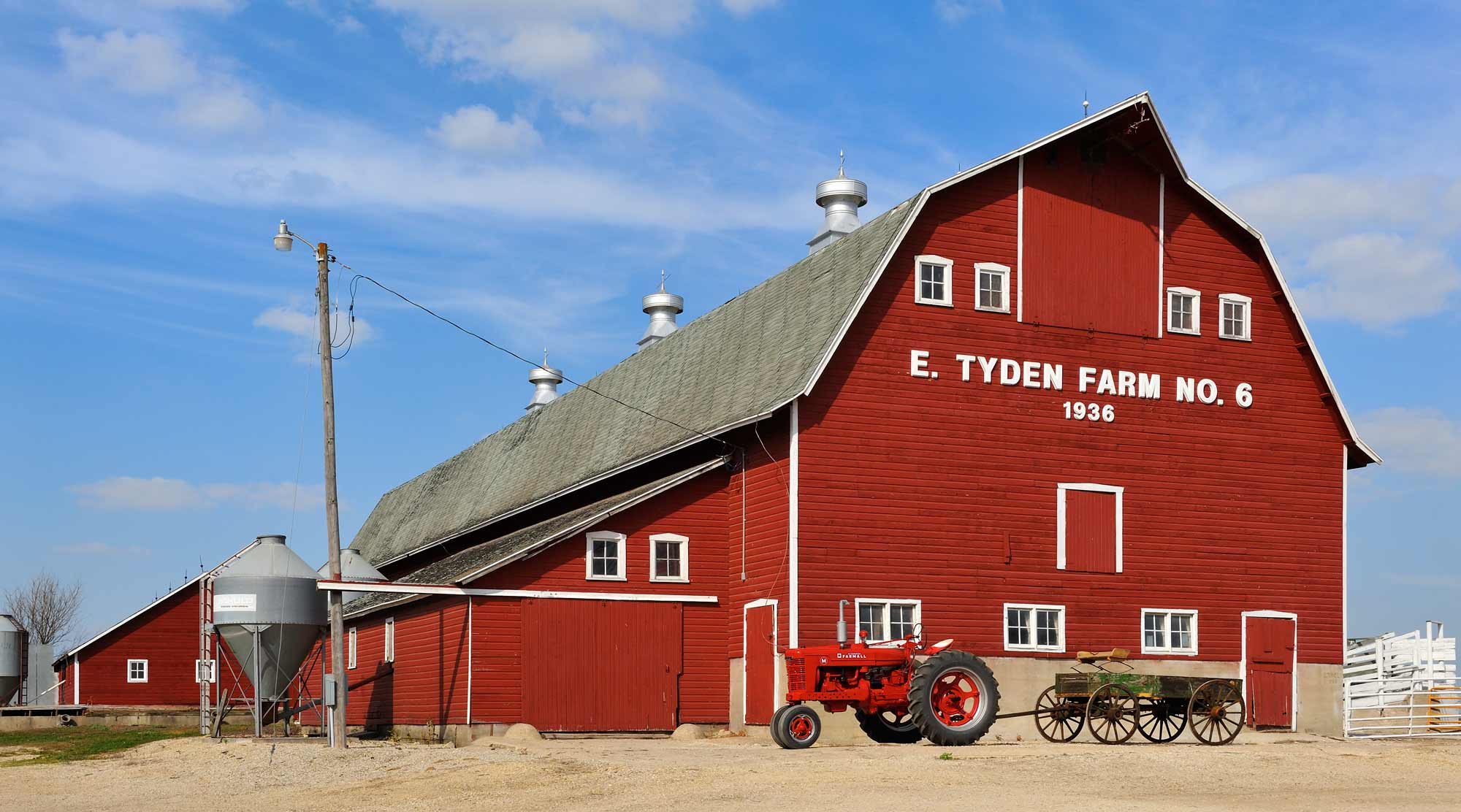 |
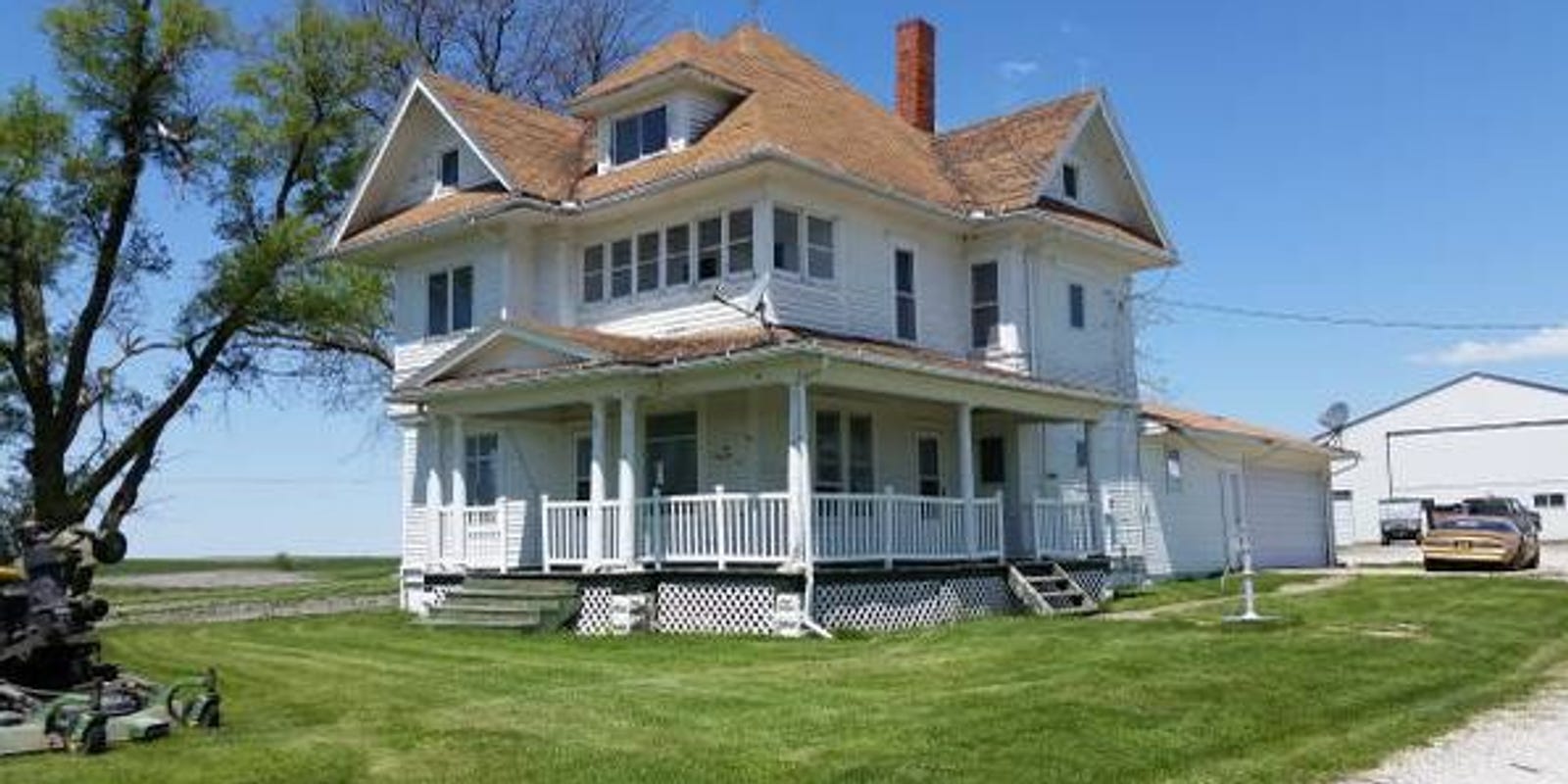 |
One of the problems out here in the heartland is that there are not enough young people going into farming to keep these family farms going. Iowa has some of the nation's very best public schools. Graduates then go off to college and earn degrees in law, medicine, nursing, engineering, and other professional fields. They don't come back to take over the farm. As the parents reach retirement age, there's no one to hand the farm down to. Often, there's not even anyone interested in buying it. Many of these beautiful old farm houses and barns are already standing empty, and many others soon will be. It's a serious problem. You may be going to bed before the Zephyr pulls into Omaha's Union Station at around 11 pm. You'll almost certainly be there by the time the train reaches Lincoln at midnight. So you'll miss the Nebraska ranches. |
You'll probably wake up the second day to the sound of people getting off and then on the train at Denver. It'll be around 7:30 a.m., but you should get up, dress and hurry outside. The Zephyr stops here for about 50 minutes and this is one of America's most beautiful stations. It was already a grand old 1914 station. But in 2012 they redid everything. The complex now includes restaurants, shops and a hotel. This is a big college stop. Students at the University of Colorado, Colorado State, the Air Force Academy, Regis University and the University of Denver all use Amtrak because of the unpredictable weather. In the Winter this is a big ski stop, and in the Summer a big backpacking stop. You'll want to make sure you have a good window view of Moffat Tunnel 50 miles west of Denver. At six miles long it's the fourth longest tunnel in North America. |
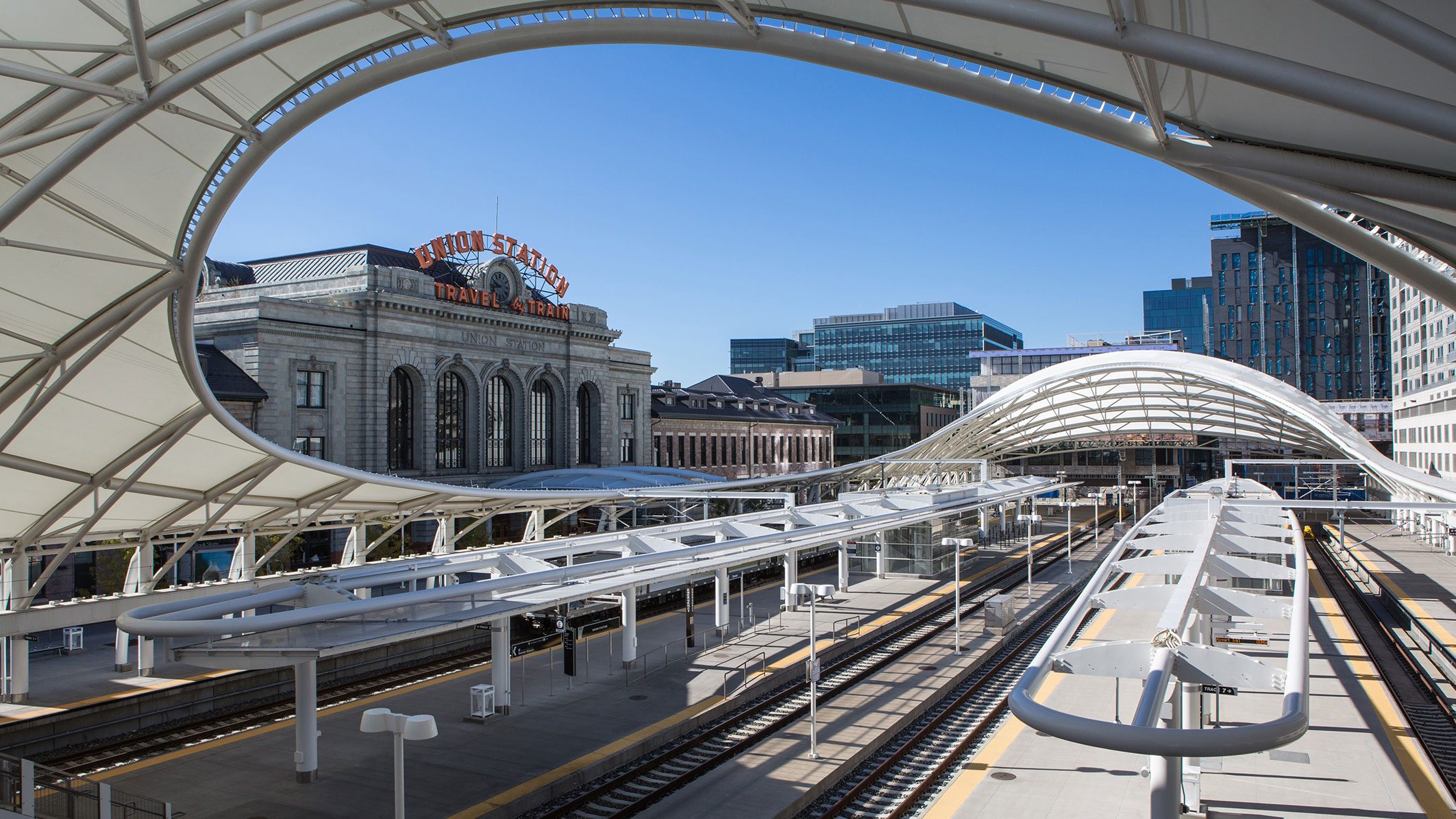 |
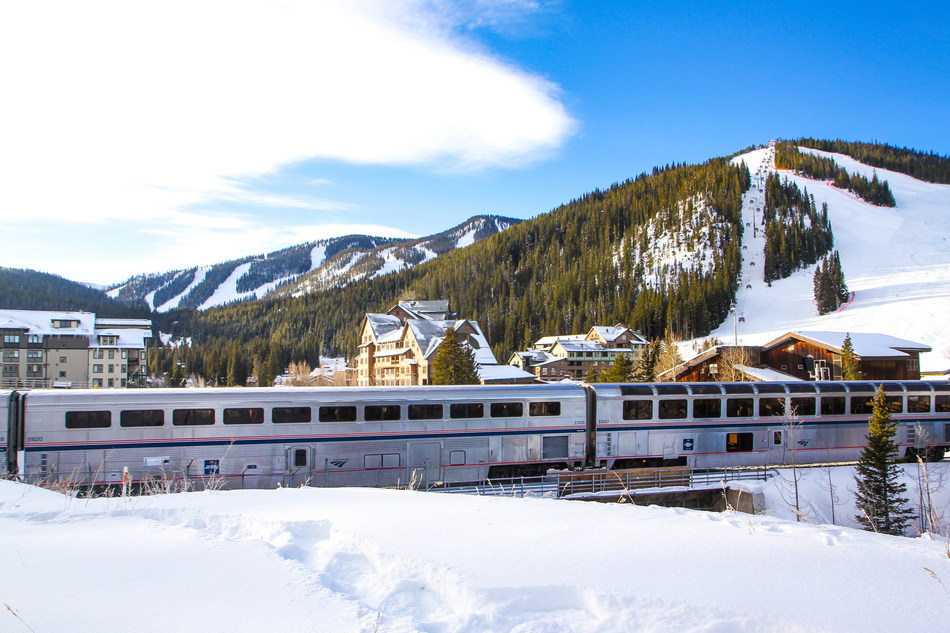 |
Winter Park is the only ski resort in the nation where Amtrak pulls right into the actual resort. It lets people off at the steps to the main lodge, then stops two miles around the bend at Fraser, a small town of motels, condos and rental houses serving Winter Park. Many skiiers consider Winter Park the top ski resort in the U.S. because of its size. You could ski here for a week without skiing the same run twice. The runs here are also very long. There are runs an average skiier takes 45 minutes to an hour descending. One reason Winter Park is so large is that it's really two resorts; the main resort absorbed neighboring Mary Jane in 1986, giving it a combined 3000 acres. Winter Park is also Colorado's longest continuously running ski resort. Most experts consider Winter Park's ski school the nation's best, especially for its handicapped skiing sessions. Winter Park has a very long season, and even if you come through in mid Summer you'll probably still see snow on the peaks. For local skiiers, Denver runs a ski train, which runs specifically between the city and Winter Park. It comes out each morning and back each evening. The ski train runs November through March. The ski train runs about an hour behind the Zephyr. |
About 30 minutes past Winter Park, the Zephyr stops at Granby, the west entrance to Rocky Mountain National Park. Granby is a charming town with a spectacular setting. It's on a lake shore with high mountains going up on three sides and ranching country extending westward. Granby has a log architecture, Old West look. Many of the park's major backpacking and day hiking trails head up from the Granby town limits. There are plenty of motels, lodges, condos, apartments and rental cabins here. Many long time park visitors prefer Granby because it's smaller and much less crowded and less expensive than Estes Park on the front side. In the Winter, Granby receives several feet of snow and Amtrak is often the only connection to the outside world. From here, the Zephyr enters deep mountain country, following narrow canyons through national forest and wilderness areas. It will be three and a half hours until the next town. Granby is the beginning of one of the most spectacular segments of any Amtrak trip. |
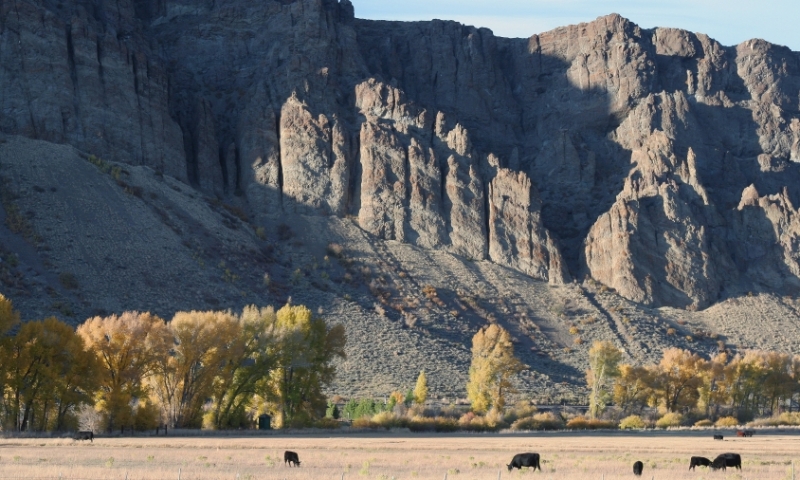 |
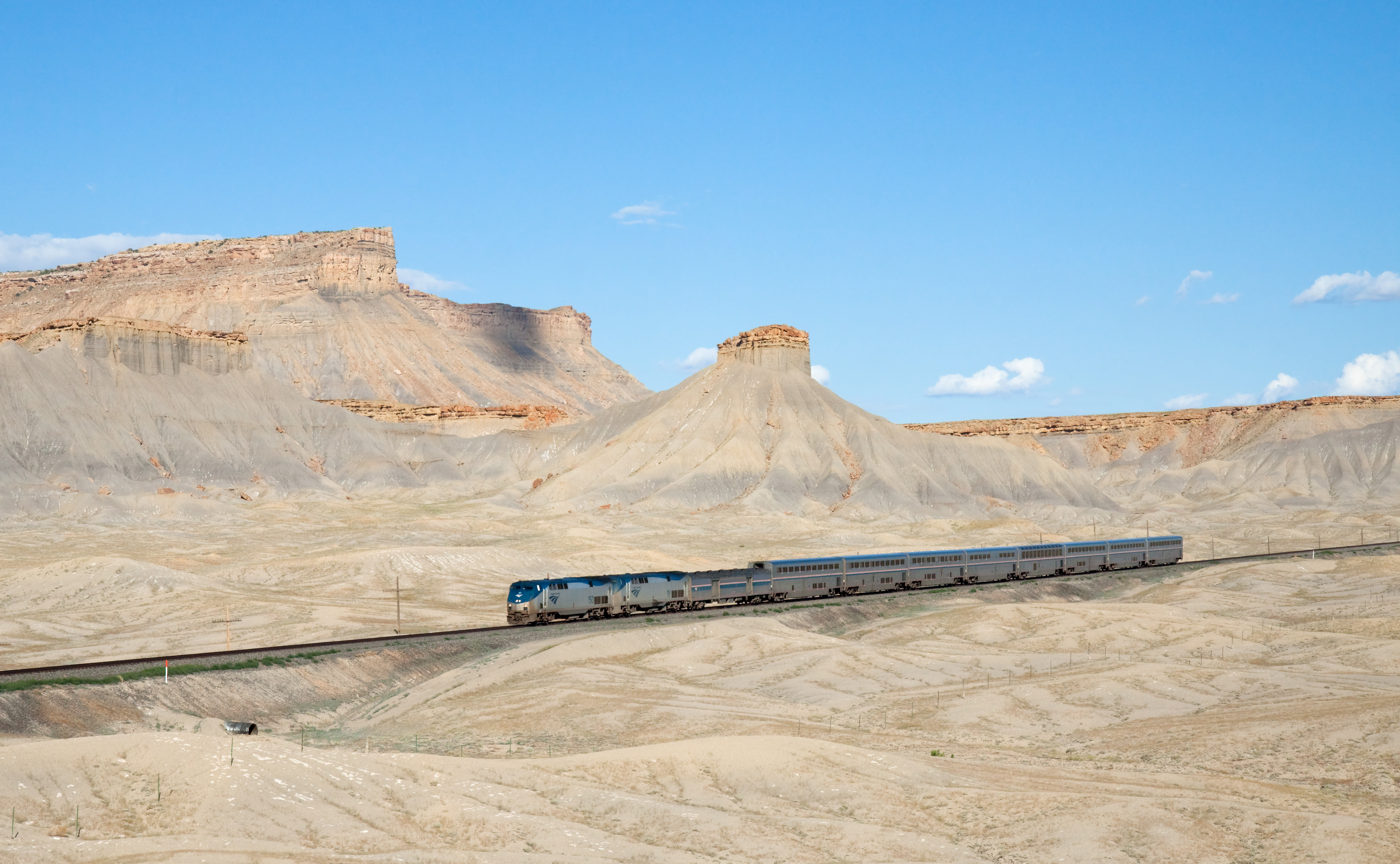 |
Once you wind through the Rocky Mountains, you emerge into the Great Basin, a surreal landscape of wierd rock formations, buttes, aroyos, sand, and vast expanses of desert. There's not enough water here to support farms or ranches. Unfortunately, whether you're riding westward or back eastward, darkness prevents you from seeing much of Utah, which has by far the most spectacular scenery. But you will see most of Nevada, and it is also beautiful in a very stark sort of way. Some of this land is set aside as national park or national monument (Canyonlands, Bears Ears, Capitol Reef, etc.). Some is used for mining or drilling. But we have yet to figure out a way to use much of it. Geologists and Paleontologists have been exploring this region for over 100 years. They've discovered priceless fossils and have learned much of what we know about Earth History from the undisturbed layers of rock. |
Laying the tracks across this expanse was a difficult and epic achievement for the railroads back in the 1800s. The work was done mostly by Chinese laborers. When it was completed, they mostly retired to San Francisco and built what became famous as Chinatown. There are very few towns here and thus very few Amtrak stops. Heading westward, you might stay awake until the Salt Lake City stop. The station there is very nice and the Zephyr waits 30 minutes for servicing. Once you leave Salt Lake City, the Zephyr sees no other town until Elko, Nevada at 3 a.m., a stop you'll almost certainly sleep through. You'll probably wake up for the Reno, Nevada stop at 8:30 a.m., and be eating breakfast as you cross the California state line and stop at Truckee. |
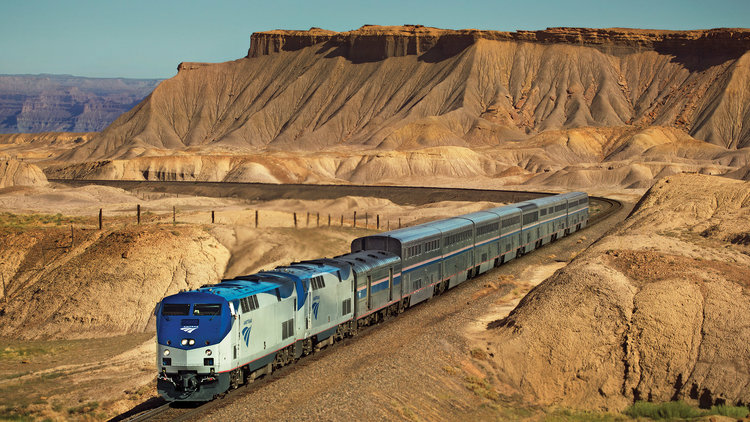 |
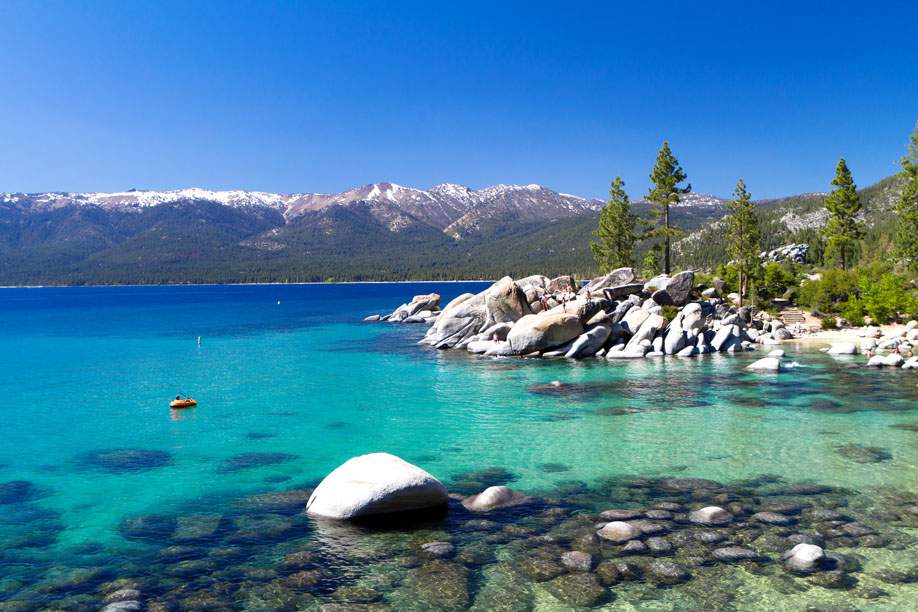 |
Truckee, named for an early Paiute chief, has always been a railroad town but is also the gateway to Lake Tahoe National Park. A shuttle bus runs from the Truckee Amtrak Station to Lake Tahoe every hour seven days a week. The shuttle takes 30 minutes and stops at the Zephyr Cove Resort, which has both a lodge and cabins. The resort was built in 1900 and is one of the oldest in the national park system. As you leave Truckee, the Zephyr will climb nine miles to the famous Donner Pass, where in 1846 a covered wagon train was stranded by a blizzard and only 41 of the 85 original migrants survived. As some members died, others cannibalized them. Two groups tried to go for help and died. The Donner Party has been covered in novels, movies and textbooks. Building the tracks over Donner Pass took six years. In recent years building a second track has been proposed to handle the heavy traffic in container freight originating in San Francisco and allowing a high speed train from Frisco to Reno. But widening the tunnel would be difficult. |
The 1989 earthquake destroyed Amtrak lines and the station in downtown San Francisco. Rather than replace them, the decision was made to create a major stop on the outskirts of the city at Emeryville. The new Emeryville Station serves as the western terminus of the Zephyr, a midway stop on the Seattle-Los Angeles Coastal Starlight, the northern terminus of the San Joaquin (San Francisco - Bakersfield), and a hub of local mass transit, buses and Ubers. Emeryville Station handles 600,000 Amtrak passengers a year, making it the 20th busiest station in the U.S. The Zephyr pulls into Emeryville at 4:10 pm. The eastbound train pulls out at 9 a.m. |
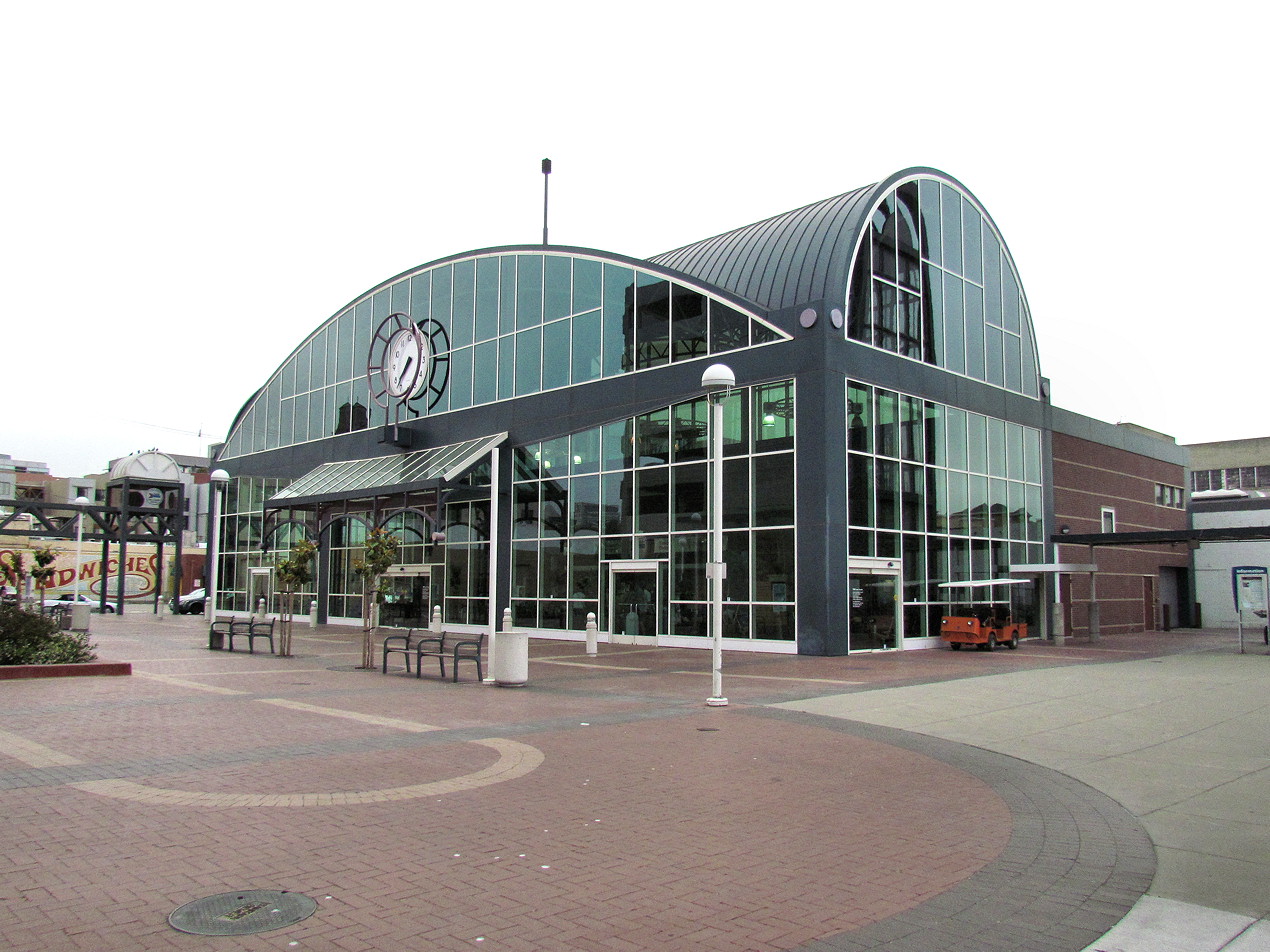 |
|
|||
|